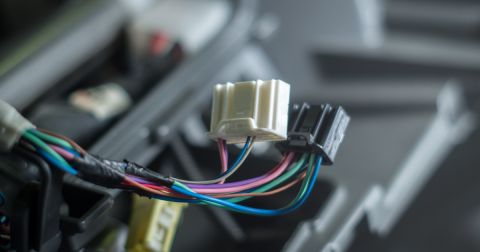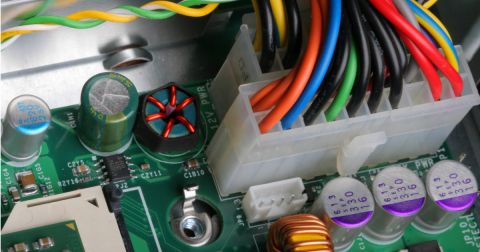The Future of Wire Harnesses in the Electric Vehicle and Electronics Era

As the automotive and electronics industries transition toward an electrified future, the wire harness remains a foundational component in electrical architecture and is currently undergoing a rapid transformation. These harnesses serve as the central framework for managing power and signal connections across increasingly complex systems. With the rise of electric vehicles (EVs) and intelligent electronics, the design, manufacturing, and functionality of wire harnesses are evolving to meet higher performance and reliability standards.
EVs and Electronics Push Wire Harness Complexity to New Heights
Unlike internal combustion engine (ICE) vehicles, electric vehicle wiring systems depend heavily on high-current distribution and data communication. EVs replace mechanical drivetrains with systems that include battery management, power electronics, and real-time sensors. All of which require dense electrical interconnects.
Simultaneously, consumer electronics, industrial automation, and IoT devices demand compact, reliable, and high-speed data paths. As a result, modern automotive wire harness designs must accommodate high-voltage transmission, signal integrity, weight optimization, and resilience to harsh conditions—all within tight packaging constraints.
Prioritizing Lightweight and Sustainable Solutions
Reducing weight plays a central role in both EV and electronics design. In EVs, lightweight wiring harnesses improve driving range, while in electronics, smaller and lighter components improve efficiency and portability. Engineers are adopting materials like aluminum instead of copper, flat cables, and miniaturized connectors to support these goals.
Sustainability also influences wire harness development. More manufacturers are evaluating materials for recyclability and environmental impact. Future harnesses may include bio-based plastics or recycled components to align with greener production standards.

High-Voltage Systems and Faster Data Transmission
Electric vehicles differ from ICE vehicles in that they require high-voltage wiring harnesses, typically rated between 400V and 800V or more. These harnesses must transfer power efficiently from battery to motor, while also meeting requirements for insulation, thermal stability, and shielding. New materials and configurations improve heat resistance and reduce footprint without compromising performance.
In consumer and industrial electronics, focus shifts toward high-speed data transfer and signal reliability. Harnesses increasingly support standards like USB-C, HDMI 2.1, and Thunderbolt. As devices become more compact, reducing electromagnetic interference (EMI) becomes essential to maintain stable performance.
The Shift to Modular and Smart Harnesses
Wire harness manufacturers are adopting modular wiring harness architectures to keep pace with evolving vehicle and product platforms. These modular systems use standardized connectors and interchangeable components, which simplify installation, maintenance, and scalability.
In parallel, “smart” wire harnesses are gaining traction. These designs embed sensors and diagnostics within the harness to enable real-time monitoring of current, voltage, and temperature. This added intelligence supports predictive maintenance and system diagnostics in electronics applications ranging from medical devices to industrial automation robots.
Wire Harness Automation and Advanced Manufacturing
The growing complexity of wire harnesses has prompted significant changes in manufacturing techniques. While wire harness assembly has long relied on manual labor, automation and robotics now improve precision and output.
Technologies such as 3D printing and digital twin simulation streamline wire harness prototyping and functional testing, which helps reduce time-to-market and production costs. These tools are set to become significant competitive advantages for manufacturers in both the EV and electronics sectors.

Where Wire Harness Development Still Faces Resistance
Despite the future opportunities in wire harness design, several challenges still remain. Manufacturers must balance the need for smaller, lighter, and more complex wire harnesses with cost constraints. Global supply chain disruptions in recent years, namely those seen during the COVID-19 pandemic, have also highlighted the value of localized manufacturing and sourcing strategies.
Standardization also remains a difficult hurdle. The diversity of EV platforms, varying electronic architectures, and regional regulatory requirements complicates efforts to create universal design standards. Collaboration among automakers, electronics companies, and regulatory agencies will be necessary to align expectations and ensure compatibility.
Wiring the Electrified Future
As electric vehicles and advanced electronics shape the future of mobility and connectivity, wire harnesses will continue to play a central role in ensuring safe, efficient operation. The wire harness industry is meeting the demands of electrification and connectivity through advancements in materials, designs, automation, and production techniques.
These systems are evolving into active, intelligent infrastructure that supports high-voltage distribution, fast data communication, and real-time diagnostics. For engineers, manufacturers, and system designers, the future brings new opportunities to redefine how wire harnesses function in the broader electrical ecosystem.
Want to seamlessly design wiring for your harness? Experience the power of wire harness design in Altium Develop.











